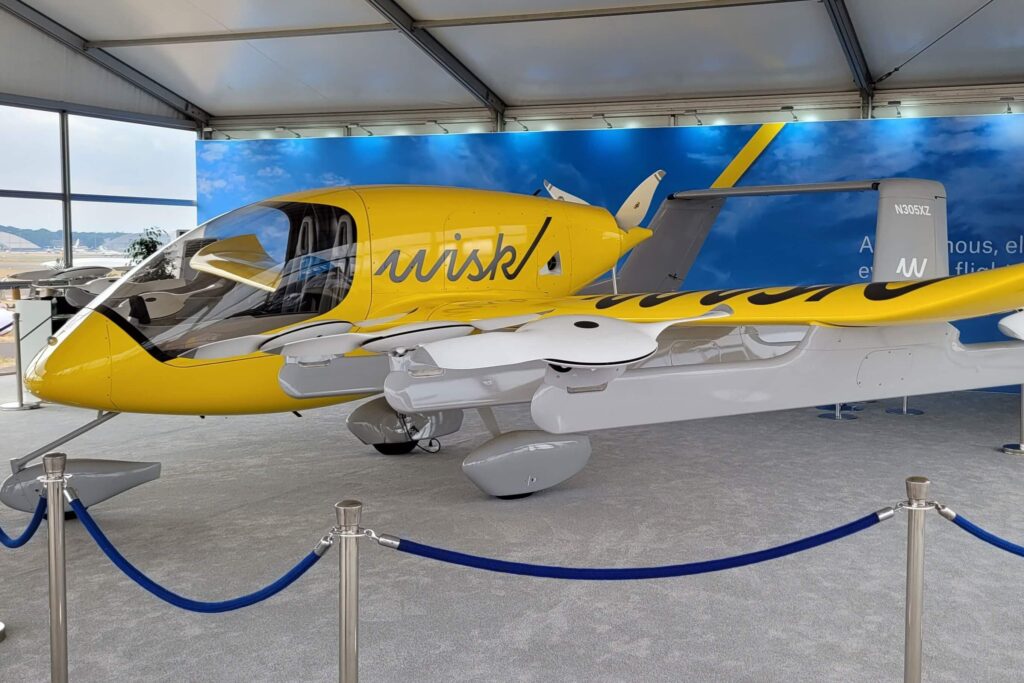Boeing and air taxi developer Wisk have set out proposals for how they see the way to bring self-flying electric aircraft to transport passengers and cargo in cities in the future.
Developing a network of autonomous electric aircraft will require new infrastructure and people working on the ground to ensure the uncrewed aircraft are flying safely, the two companies said in a joint paper on September 20, 2022. The plans also see a shift in the role of pilots to become “multi-vehicle supervisors” working in operations centers on the ground.
“Air travel will become much more personal, accessible, and frequent as we normalize a new form of transportation in the skies,” Boeing and Wisk write in their Concept of Operations (ConOps) for uncrewed passenger-carrying urban air mobility (UAM) operations.
The concept paper said it “specifically addresses a critical element to safely scaling up the tempo of UAM flight operations – enhanced automation and shift in how we define the role of pilots”.
The concept paper was developed with United States airspace in mind, but Boeing and Wisk said it could be used as a blueprint for global UAM operations.
Wisk is aiming to be the first company to bring an all-electric, self-flying air taxi to market in the U.S. The Boeing joint venture showed off the fifth generation of its self-flying all-electric aircraft at the Farnborough Airshow 2022 in July and said the next generation would be ready in the fall.
Who’s flying the aircraft?
Among the many challenges for developers of electric taxis are integrating them into existing airspace and ensuring safe flight over the built-up areas where they are seeking to ease congestion on the ground.
“The important work we’re sharing today provides a stepping stone in the advancement of UAM in the U.S. and the world,” said Wisk CEO Gary Gysin in a press release.
Boeing and Wisk said vertiports will need to be created – places where flying taxis can take-off and land, load and unload passengers and receive services.
While Wisk is planning for its aircraft to be fully automated, rather than remotely piloted, humans will still be needed, albeit on the ground. The new technology could even help ease pilot shortages, the paper predicts.
“A novel and unique workforce will be required for UAM and the broader AAM industry,” the concept states. “New career paths will combine traditional aviation with autonomy and electric propulsion which have the potential to alleviate anticipated pilot shortages.”
Boeing and Wisk said they recommend setting up “fleet operation centers”, where “multi-vehicle supervisors” will fulfill the legal role of pilot-in-command. The supervisor will monitor flights, implement air traffic control instructions to keep aircraft a safe distance from each other, and ensure flights are safely operated.
Helicopters as trial runs
“We’re working to enable a future of aerospace that is safe, sustainable and at scale. Uncrewed operations will be fundamental to realizing that vision, and we have to exceed the current safety standards for the air transportation system,” said Brian Yutko, Boeing Vice President and Chief Engineer of Sustainability & Future Mobility.
The two recognize that in the first stage for integrating UAMs, pilots will be onboard, and heliports will be used. While initially pilots will communicate with ATC, in the future communications will be automated and vertiports will replace heliports.
Boeing and Wisk aren’t the only ones working to show how flying taxis can be safely used in busy urban areas. Rival Eve, spun off from Embraer, has been using helicopters in downtown Chicago to gain a better understanding of how flying taxis will work for commuters in real life operations

